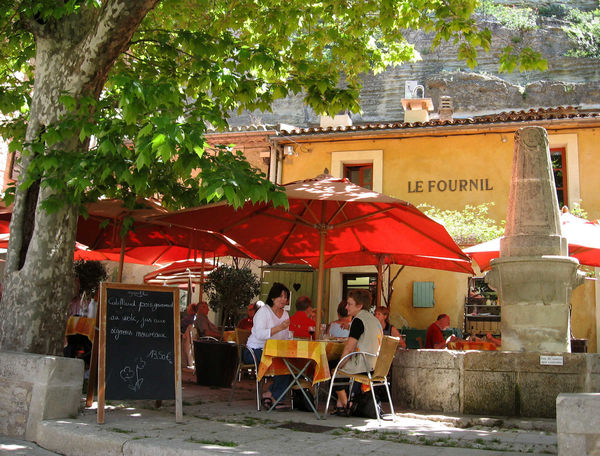A Three-Hour Joyride in a French Restaurant
In France, take your taste buds on an adventure by lingering over each course of a fine meal.
By Rick Steves

Because I come from a backpacker travel heritage, where a hearty picnic is the answer to a prayer, it's taken me decades to recognize the value of a fine meal. Now I can enthusiastically embrace a long, drawn-out dinner splurge as a wonderful investment of both time and money. Nowhere is this truer than in France.
French cuisine is an adventure for your taste buds, and a full-course meal at a good restaurant is a three-hour joyride for the senses — as rich as visiting an art gallery and as pleasurable as a day at the spa.
Some Americans are intimidated by the idea of dining at a fine French restaurant, but they needn't be. Many waiters speak English and are used to tourists. Sure, like any foreigner you may indeed butcher the name a dish or commit an accidental faux pas, but who cares — the food easily makes up for it.
French service is polished and polite, but not chummy. Waiters are professionals who see it as their job to help you order properly for the best possible dining experience. If you get a cranky waiter…you're not alone. Even the French love to complain about grouchy service.
A key tip for English speakers: In France, the menu is called la carte. You can order individual items off the full menu (à la carte) just as you would at home — but you can save money by ordering a multi-course, limited-option, fixed-price meal…which, confusingly, is called le menu (or la formule). And keep in mind that French restaurants commonly serve dinner only between 7 p.m. and 9 p.m. — if you have your heart set on a certain place, consider making a reservation.
I vividly recall one particular meal that helped open my eyes to the rewards of spending more time and money on fine dining, at least every now and then. I was with my friend and guidebook co-author Steve Smith in Amboise, in the midst of France's château-rich Loire Valley. Steve ordered a basic menu and I went top-end, ordering off la carte.
Aurore, our waitress, was no grouch. She smiled as I ordered escargot for my first course. Getting a full dozen escargot rather than the typical six snails doubles the joy. Eating six, you're aware that the supply is very limited. Eating 12, you get to enjoy the first eight like there'll be no end to your snail fun. For the full experience, match your snails with a good white wine.
With my crust of bread, I lapped up the homemade garlic-and-herb sauce while asking Aurore how it could be so tasty. With a sassy chuckle she said, "Other restaurateurs come here to find the answer to your question." Then she added, "It's done with love." While I'd heard that line many times, here I believed it.
In France, slow service is good service. After a pleasant pause, my main course arrived: tender beef with beans wrapped in bacon. Slicing through a pack of beans in their quiver of bacon, I let the fat do its dirty deed. A sip of wine after a bite of beef seemed like an incoming tide washing the flavor farther ashore.
My crust of bread, a veteran from the escargot course, was called into action for a swipe of sauce. French cuisine is proudly sauce-centric. If the sauce is the medicine, the bread is the syringe. Thanks to the bread, I enjoyed one last saucy encore, a tasty echo of the meat and vegetables I'd just savored.
Shifting my chair to stretch out my legs, I prepared for the next course: a selection of fine cheeses. It sounds like a lot of food, but portions are smaller in France. What we typically cram onto one large plate they spread out over several courses.
Aurore brought out her cheese platter, a cancan of moldy temptations on a rustic board, the mellow colors promising a vibrant array of flavors. With the cheeses came a special extra item: raisins soaked in Armagnac brandy. The lovingly sliced selection of cheeses arriving on my plate made me want to sing — but in consideration for other diners, I just mimed my joy silently.
Then came dessert. Mine was a tender crepe papoose of cinnamon-flavored baked apple with butterscotch ice cream, garnished with a soft slice of kiwi. That didn't keep me from reaching over for a snippet of Steve's lemon tart with raspberry sauce.
Aurore never rushed us, even after we'd finished our dessert. In France, as in most of Europe, your server will not bring your bill until you ask for it. When I'm in a rush, here's my strategy: Once I'm done with dessert, and the waiter asks if I'd like some coffee, I use it as the perfect opening to ask for the bill.
Our entire meal cost us about $60 each. I consider it $20 for nourishment and $40 for three hours of bliss. I can't imagine a richer travel experience, one that brings together an unforgettable ensemble of local ingredients, culture, pride, and people.

